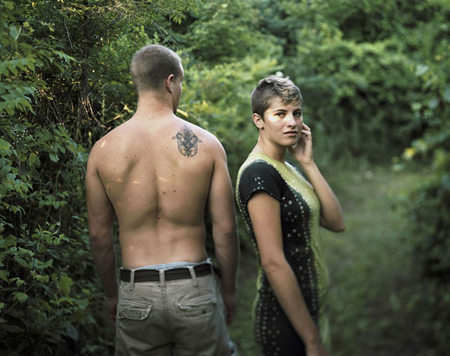A Conversation with CPC 2009 Winner Lydia Panas
Lydia Panas’ portraits, which typically contain at least two, if not more people, possess that little something that lifts them above a lot of other portraiture and that at the same time is so undefinable, so indescribable. In Lydia’s case, the magic seems to be coming from the interaction between the subjects. Group portraits often contain an element of heroism - this alone would be a good topic for a longer discussion (see an example here) - and that heroism is absent in Lydia’s work. Instead, there are trust and displays of intimacy.
Having talked to many portrait photographers I was curious about what went into the making of these images, so I asked Lydia about it in the following conversation. Click on the images to see them slightly bigger (of course, they are all copyright Lydia Panas).
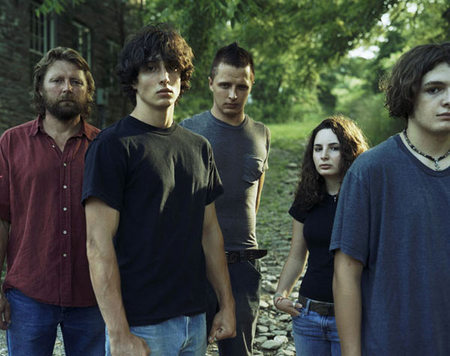 Jörg Colberg: Many of your portraits in “The Mark of Abel” contain two or even more people. I’m curious about your motivation for this.
Jörg Colberg: Many of your portraits in “The Mark of Abel” contain two or even more people. I’m curious about your motivation for this.
Lydia Panas: I am looking at family relationships to explore how psychologically complex we humans are. As our complicated and subtle interactions within our families form and inform our later relationships, I thought it would be an interesting theme to explore.
My models are people I know. I ask them to bring along family members (in some cases a close friend) with whom they have a history, so they are already involved with one another when we meet for the photograph.
I am always interested in how we become the way we are. For instance, why some people are kind and some are cruel. Why some care and others don’t. Why some people have drive, and others seem not to have any. I have questions like this. And naturally it all comes from how we were raised and how we handled our circumstances. So I watch to see what I can gather. Almost like a survey except it is unscientific, and I infuse my own personal and artistic biases. Of course, I don’t come up with answers; but simply observations and hopefully a kind of empathy.
 JC: So you only work with people you know? Can you imagine expanding your work at some stage to work with strangers?
JC: So you only work with people you know? Can you imagine expanding your work at some stage to work with strangers?
LP: At this point I work with people I know. It sets up specific parameters. I feel easier about approaching them, and asking them to pose.
There is one picture in which I did not know the people very well. They had just bought a piano from me, and I wanted to photograph the woman. I have not had any more contact with them. I like the picture, but the whole episode felt strange to me. Like a hit and run. With the people I know, I still see them, so there is an added sense of urgency or tension to the way the image is made.
I have no interest in approaching strangers at the moment, but I would not rule it out if the project called for it.
JC: Well, at some stage, you might just run out of people you know maybe? Or do you plan on re-visiting older photographs and “update” them by adding newer versions to them? Is that something that would interest you?
LP: The series started very simply. I wanted to explore color for the first time and try making portraits again after a number of years of making still lifes. My sense of color surprised me, along with what the images portrayed.
Nothing in this series was deliberate or planned. It blossomed into a great surprise for me. So I don’t worry about things like running out of subjects, etc. Anyway, the series was finished last summer. It ended as simply as it began.
I have been working on a new project for a number of months, and am absorbed by what is coming out of my camera this time.
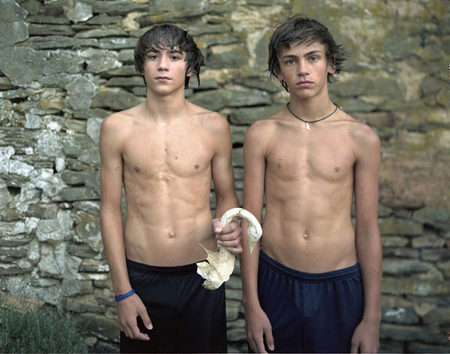 I do however have one image I made recently, an updated version of the “Mr. President…” image. This is the photograph of two young boys standing in front of a stone wall. The new version depicts two boys as young teens, and here there is a whole different kind of tension from the earlier version.
I do however have one image I made recently, an updated version of the “Mr. President…” image. This is the photograph of two young boys standing in front of a stone wall. The new version depicts two boys as young teens, and here there is a whole different kind of tension from the earlier version.
JC: How do you approach such group portraits? Do you guide your subjects at all? Do you place them in the picture?
LP:I mostly watch, with a little direction to make the details more compatible with something I recognize. I select a setting on my property for the shoot. I ask them to stand there and watch how they arrange themselves. (As I work with a large format camera, I am under a black hood some of the time). Then I try to understand what I am looking at. As I watch, I get a sense of what the relationship means to me.
I want them to be comfortable, and to be themselves, but I may ask for some changes. Usually the changes are minor, and it is in these details where I direct. An arm here or there, a little more space. I may ask someone to look in a slightly different direction. Earlier in the process I did more directing, but as time went by, I did more looking and less directing.
I am very conscious of how much control I exert. The pictures can seem like nothing is happening if you don’t look closely, because I try to carefully measure my influence, and yet they are consistent; so much of my perspective comes through in the photographs anyway.
Kant said all knowledge comes from experience. This process helps me understand more about myself. As does all art-making if we allow it.
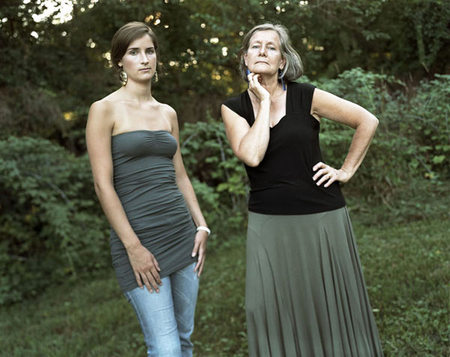 The process is a seduction of sorts. The models and I have to engage. There is a give and take between us.
The process is a seduction of sorts. The models and I have to engage. There is a give and take between us.
Initially it may feel strange, but at a certain point I start to see and feel something. A kind of excitement builds. Afterward there is an intimacy, a kind of bond between us.
I am interested in the tension that unfolds quietly throughout the series. How the models stand in relation to one another. How they stand in relation to the camera and to a possible audience. How they stand in relation to me. I am interested in all the little details.
I choose people by how I feel about them, and whose faces I am drawn to. I usually want to photograph someone whom I feel I understand in some way. I don’t ask them to do anything, except stand there and be.
The photographs don’t offer specific stories, or answers, just clues. The viewer can understand them according to their own situation. To understand my photographs I think you have to be able to feel them.
JC: It seems like your photographs thus demand a lot from their viewers. Are you ever worried that people might just not get it? That what you’re after doesn’t get through to them?
LP: The topic is subtle, so the photographs need to be subtle. If they were not subtle, they would lose what they try to impart. It’s important to me to take the picture the way I see/feel it. And subtlety is a quality I prefer.
There are people who don’t understand them, however, there are so many people who do, that I can’t really worry about that. And besides, demanding a lot from people is elevating. It works very well with my students!
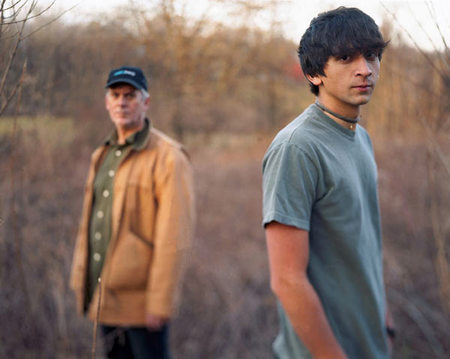 JC: I’m also curious about the title “The Mark of Abel”…
JC: I’m also curious about the title “The Mark of Abel”…
LP: The Mark of Abel is a quote by Diane Arbus that refers to the complicated relationship between the brothers Kane and Abel. Kane killed Abel because he was the favorite. The title refers to all our complicated family relationships.
JC: Which photographers/artists have had an influence on your work? Which photographers/artists do you feel close to as an artist?
LP: Robert Frank, Diane Arbus, Cindy Sherman, Rynecke Dykstra, Katy Grannan, RIchard Avedon, Sophie Calle, Hiroshi Sugimoto. Gerhard Richter, Rembrandt
These artists’ works are all very direct. They are psychologically compelling and capture a state of mind we often cannot access or don’t want to see. Most of the works I am thinking about have in common a serial narrative. They are direct and un-romanticized. And they go places most of us are not willing to go.
 By
By 